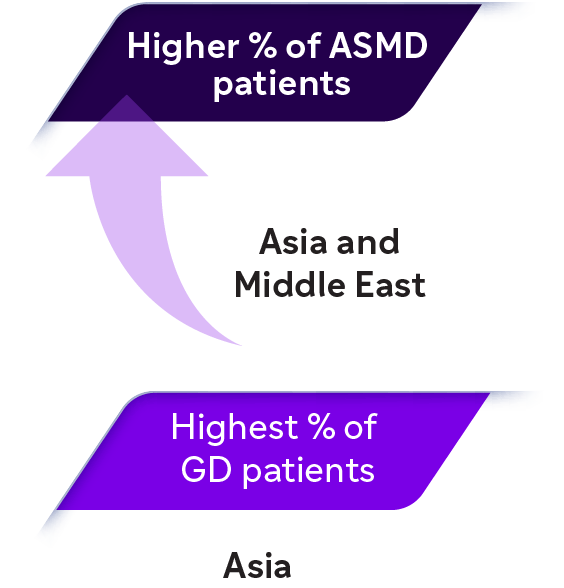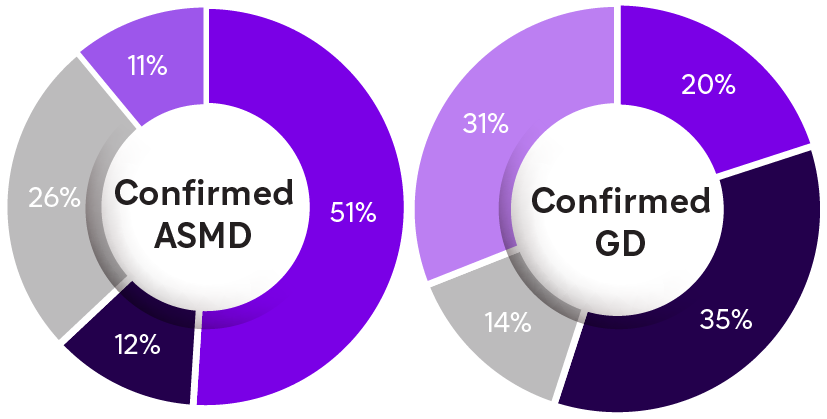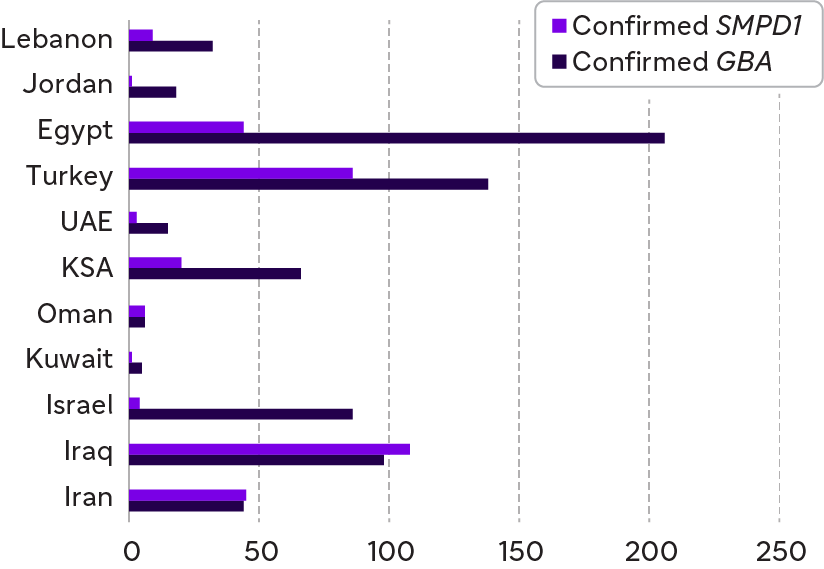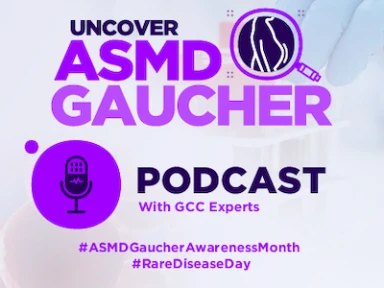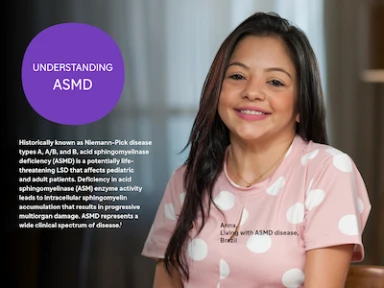{
event: "article_read",
name: `Differential Diagnostics for ASMD in Patients Suspected to have GD`,
author: ``,
tags: `Rare Diseases`,
publication_date: ``,
interaction_type: "content"
}
Differential Diagnostics for ASMD in Patients Suspected to have GD
Objective
To demonstrate
|
of differential diagnosis |
 |
Primary diagnostic testing |
 |
 Improve detection rate of potential Improve detection rate of potential ASMD ASMD Avoid diagnostic delays |
A multicenter, prospective study
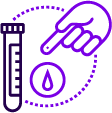 |
DBS testing GBA enzyme activity
ASM enzyme activity |
Genetic confirmatory testing |
Results
Genetic confirmatory testing done for 5933 cases
| SMPD1 gene sequencing for 1171 cases | GBA gene sequencing for 4762 cases |
|
ASMD:GD varies by region
Overall, 1 out of 4 patients with suspected GD suffered from ASMD. |
Overall, 51% of ASMD cases were newborns. |
|
|
|
|
|||
|
|
|
||
|
5933 symptomatic cases showed decreased enzyme activities |
227 distinct SMPD1 sequence variants identified |
10 more frequent variants |

Most of the cases with ASMD from the Middle East were newborns and with GD were adults.
 |
Color by: Gene-ID |
|
 GBA GBA |
 Adults (>18 years) Adults (>18 years) |
|
 GBA GBA |
 Children (below 10 years) Children (below 10 years) |
|
 GBA GBA |
 Children/adolescents (10–18 years) Children/adolescents (10–18 years) |
|
 GBA GBA |
 Newborns Newborns |
|
 SMPD1 SMPD1 |
 Adults (>18 years) Adults (>18 years) |
|
 SMPD1 SMPD1 |
 Children (below 10 years) Children (below 10 years) |
|
 SMPD1 SMPD1 |
 Children/adolescents (10–18 years) Children/adolescents (10–18 years) |
|
 SMPD1 SMPD1 |
 Newborns Newborns |
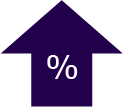 |
Higher number of confirmed ASMD patients in Pakistan, Iraq, Turkey, and Iran |
Egypt had the highest number of GD cases followed by Turkey, while Iraq had the highest number of ASMD cases.

Conclusion
ASM: Acid sphingomyelinase; ASMD: Acid sphingomyelinase deficiency; DBS: Dried blood spots; GBA: Acid- -glucocerebrosidase; GD: Gaucher disease; KSA: Kingdom of Saudi Arabia; SMPD1: Sphingomyelin phosphodiesterase 1; UAE: United Arab Emirates.
Related articles
MAT-BH-2400114-V1-February 2024











